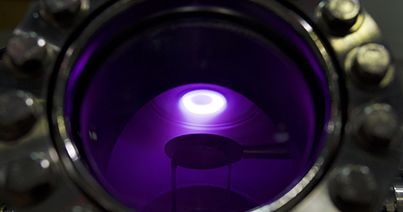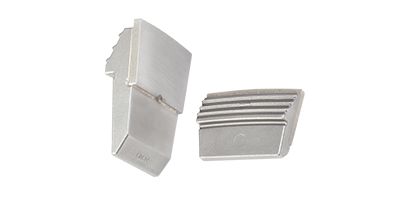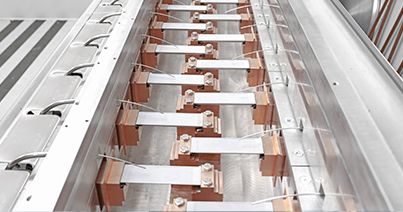
Xenon Hall-effect Thruster
Satellites, crucial for modern communications and scientific exploration, rely heavily on the equipment of their propulsion systems. Hall-effect thrusters, which control satellite positioning, face significant wear and erosion challenges, potentially shortening their operational lifespan. Kennametal Sintec™ BNP-6 boron nitride ceramic composites offer a breakthrough solution, engineered to surpass the limitations of pure hexagonal boron nitride (hBN).
This advanced material significantly enhances the durability and performance of thruster channel walls, ensuring the satellite’s extended functionality and efficiency. Discover how BNP-6 transforms satellite maneuverability, combats extreme temperatures, and reduces erosion to keep satellites operational longer.
Detailed Advantages of Kennametal Sintec BNP-6 Boron Nitride Composite
BNP-6 is meticulously engineered to address the unique challenges faced by satellite thrusters. Here are the key advantages:
- Superior Thermal Shock Resistance: Withstanding rapid temperature changes from -100°C to 1500°C without compromising structural integrity, BNP-6 ensures reliable performance in the fluctuating temperatures of space.
- High Mechanical Strength: Despite its impressive durability, BNP-6 remains easily machinable, allowing for precise customization in the design and manufacture of thruster components.
- Excellent Electrical Insulation: Providing high dielectric strength, BNP-6 minimizes the risk of electrical interference, ensuring smooth thruster operation.
- Low Secondary Electron Emission: Reduces the erosion caused by ion bombardment, extending the operational life of the thruster.
- Transparency to Electromagnetic Fields: Enhances the efficiency of plasma acceleration, contributing to more effective satellite propulsion.

Ceramic Thruster
Failure is Not an Option
An aerospace client specializing in the design and manufacture of thrusters used with Low Earth orbit (LEO) satellites and geostationary satellites required a more durable ceramic solution for its satellites’ Hall-effect thrusters. If the thrusters’ internal ceramic channel walls could not withstand the lasting effects of the extreme temperature swings of outer space, the heat generated by plasma propulsion, and ionized particles colliding with the ceramic, the resulting ceramic erosion would shorten the lifespan of all the client’s satellites and complicate their maneuverability. Seeking a better ceramic solution for its channel walls, the client turned to Kennametal Sintec. Our BNP-6 boron nitride ceramic composite provided this critical part with the resilience it needed.

Satellite in Space
Going Through Extremes
There are multiple space missions that use different propulsion methods, with Hall-effect thrusters being one of them. Both LEO and geostationary satellites use Hall-effect thrusters to control their orientation and positioning. These thrusters use a pair of inner magnetic coils that generate and maintain a large electromagnetic field in bulk plasma. The propellant can be xenon, krypton, or sometimes even iodine, which is turned into plasma by the electromagnetic field and high temperature generated by the coils. The electromagnetic field extracts positive ions from the plasma and accelerates them to high velocity to provide the necessary thrust. Plasma propulsion creates heat as high as 1500° C inside the thrusters’ channel walls. Over time, internal channel wall erosion caused by high heat and ionized particles colliding with the ceramic could become a serious concern when a satellite reaches the end of its operational life.
If the ceramic walls of the Hall-effect thrusters erode, the plasma starts to interreact with the magnetic circuit that slowly erodes as well. This is known as a “soft failure,” which can lead to a “hard failure” (loss of satellite). Recent work to reduce their size and power now makes Hall-effect thrusters a good solution for a wide range of LEO and geostationary satellites. Their working principles remain the same, but a race for lower cost and different lifetime target have a large bearing on the type of boron nitride ceramic composite used in satellite applications.
When a satellite is in direct sunlight, the space around it heats up to 120° C or higher from solar radiation. When a satellite is not in direct sunlight, temperatures surrounding it plunge to -100° C. This constant back and forth between temperature extremes challenges a satellite’s structural integrity, channel walls included. Kennametal Sintec boron nitride solutions enable excellent thermal cycling by the satellite shifting in and out of direct sunlight.

Hall-effect Thruster Cross Section Diagram
The Right Stuff
Realizing they needed a ceramic product with superior performance compared to the current material, our aerospace client sought the expertise of Kennametal Sintec. We suggested switching to our BNP-6 solution.
Kennametal Sintec BNP-6 is a hot-pressed ceramic composite of boron nitride and silica. This advanced material provides durable thermal shock resistance for orbiting satellites that experience back-and-forth swings in temperature extremes. It also has superior mechanical strength yet is easily machinable. Additionally, BNP-6 is an electrical insulator that offers a high dielectric strength and excellent resistance to wear and ceramic erosion, plus it is transparent to the electromagnetic field that accelerates the propellant and has low secondary electron emission, making it the perfect choice for the channel walls of Hall-effect thrusters.
Kennametal Sintec BN6000 is a high-purity boron nitride grade and offers easier machinability than BNP-6. With one of the highest dielectric strengths and superior resistance to high temperatures and thermal shock, it is the preferred grade for thrusters in the 100W–1kW range that power satellites in low Earth orbit.
Kennametal also offers a composite of boron nitride and aluminum nitride in our BNP-2 grade. The Kennametal Sintec BNP-2 composite exhibits excellent thermal conductivity, increased strength compared to traditional pure boron nitride, as well as higher temperature capability.
The information contained in this case study is no guarantee of actual future results. It is provided “as is” without warranty of any kind, whether expressed or implied.
Related Articles
- Evaporator Boats and the Metallizing Process Evaporating metals to create a coating on your substrate is essential in the metallizing process. Learn about evaporator boats during the metallizing process.Evaporating metals to create a coating on your substrate is essential in the metallizing process. Learn about evaporator boats during the metallizing process.
- Customer Case Study: Nozzle life improvement up to 25% with Kennametal ROCTEC APX!* Learn how one Kennametal customer saw nozzle life improvement up to 25% with ROCTEC APX Abrasive Waterjet Nozzles. Read now.Learn how one Kennametal customer saw nozzle life improvement up to 25% with ROCTEC APX Abrasive Waterjet Nozzles. Read now.



